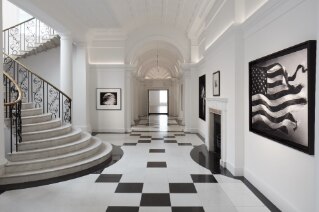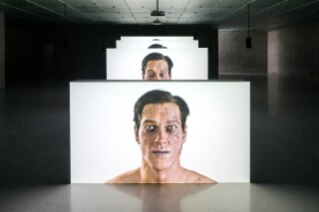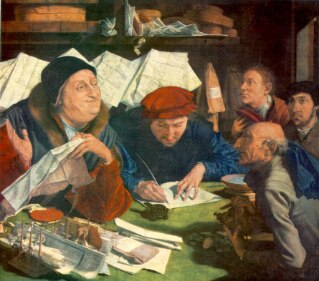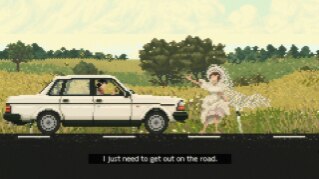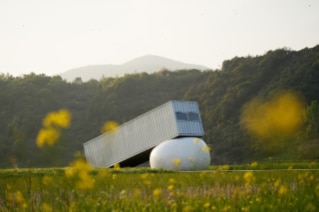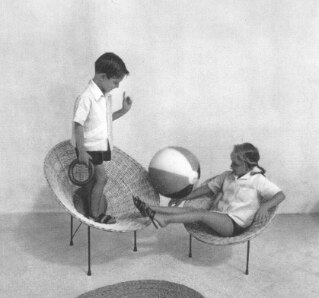Hannes Becker is a German-based freelance photographer specialized in outdoors, adventures, and landscapes. On Instagram, he is one of the world’s most-followed travel photographers; but he’s also the heir of a long tradition that goes back to the origins of photography through masters like Ansel Adams. OnePlus is one of the most popular smartphone brands in the world, known for its powerful devices and a minimalistic approach to design. The company and the photographer met for the launch of the new OnePlus Nord, the brand’s first mid-range phone, which sports an impressive quad-camera, which could be the best camera that even came from OnePlus. To make it more special come three built-in filters that were created exclusively for this phone by Becker himself. And this explains a bit about what a photographer of the Instagram age is meant to be: not merely a photographer, neither just an influencer; he’s a reference of our imagery, a creator of contents, and shapes for the digital era.
How is the process behind creating a smartphone camera filter?
When OnePlus reached out and asked me about the idea of developing three exclusive filters, I immediately knew which direction I want to proceed. As a landscape photographer, there are basically only three lighting conditions, where you can shoot: sunrise, overcast/foggy, sunset. The filters are inspired by the Nordic countries of Finland, Sweden, and Norway. Finland, for example is located in the East, one could say it’s the Scandinavian country of the rising sun. The filter is called “Ylläs” a small town in Northern Finland, where I witnessed some of the most pristine sunrises. So this filters work best with the soft and early morning light and will enhance the first colors of the day.
Why Scandinavia?
Because it’s OnePlus “Nord” – but also my love and passion for the Nordics. The wild and rough scenery of Scandinavia, the untouched lands, and still hidden gems are my favorite object to shoot. That’s what inspires me to create, and I’m driven by it. It’s just the perfect fit of the new Nord line and my philosophy as a photographer. Overall the very powerful and strong look aligns with the concept of the Nordics. Sarek is inspired by one of the biggest areas of wilderness in Sweden, endless mountains, lakes, and forests are dominating. The landscape looks very stark and wild. The filter fits perfectly to overcast or rainy days. A very cold and blueish tone, you will sense the true Nordic spirit when using it.
The third and last one is Vaeroy.
It is inspired by a tiny island off the Norwegian coast in the West. I have shot some of the most tranquil and vibrant sunsets there. The filter enhances the golden light and will look very lush. Orange and red hues are dominating. It’s perfect for backlight sceneries and especially works great when the sun is close to the horizon.
Which one is your favorite?
Personally I like them all, though my favorite one is Vaeroy. I have such vivid memories when I was shooting the midnight sun on the island of Vaeroy in Northern Norway, that I had to come up with a filter that always reminds me to those magical sunsets up North. Also this filter works great at any point; it’s the one I have been using the most.
How important is post-production in your work?
The process of creating an image does not end after pressing the shutter. Editing is a big part of my work. I’m always trying to recreate the mood and atmosphere of the scenery while I was shooting. What you can capture with your camera sometimes simply can’t accurately reflect the moment.

Are these filters anyhow related to the presets that you use at work?
Most of the time I’m working with only a few presets, that I use as base to develop Raw images. These presets need lots of adjustments, as mood and lighting is always changing. With the development of the Nord presets I tried to create presets that not only work as a base but also as the final layer on top. As each of them works best with one specific kind of light, all of them usually work with any scenery. Colorwise the presets are representing my very own cold, unsaturated and matt look that I have been sticking to the past years.
Do you use your smartphone as a camera?
The best camera is the one you’ve got with you. I take my smartphone everywhere to capture images and videos. With modern day technology and the perfection of phone cameras, one can barely see any differences between a phone and camera shot, especially on Social media. That’s very exciting and I can’t wait for what’s to come.
More than 1.5mln follow you on Instagram. And sometimes we forget that it was Instagram that introduced the concept of a photography filter to millions of users worldwide. Do you have any memory using filters? Even bad memories count...
When I first started with Instagram 7 years ago I always used these filters. I basically had no idea about photography or editing, the filters introduced me to create something special which wasn’t ordinary or normal. And without Instagram I would have not become a photographer after all. So retrospectively it’s crazy how a small app or a filter might change somebodies hobbies or even career. I’m looking forward to see my filter being used and hopefully I can inspire some people to look into photography.
You’re a landscape photographer, among the noblest genres of photography, with a long story going back to the 19th century. How much did technology change your job?
Instagram introduced me to the idea of becoming a landscape photograher. I grew in a small village in the middle of Germany, where’s not much to shoot, but my passion and love for nature evolved here. Being able to use Instagram as a portfolio to find clients and work that allows you to travel to remote places and see the world, is such big privilege. With photography technology becoming even better, it seems like shooting landscapes becomes easier as well and it does. But to capture something unique and meaningful on the other hand becomes more challenging too. Simply because more people are trying out photography.









